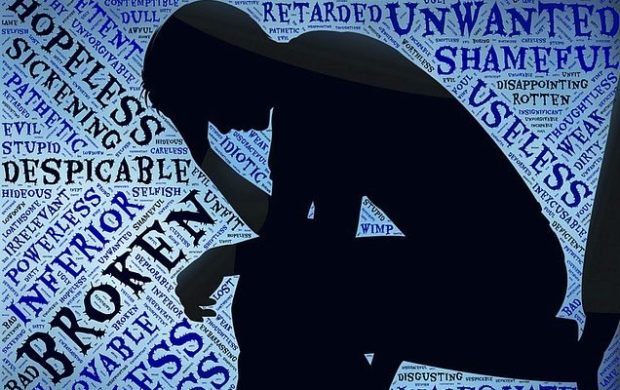World Suicide Prevention Day is observed on 10 September every year, in order to spread awareness and provide worldwide commitment and action to prevent suicides, with various techniques around the world since 2003. This day aims to start the conversation about suicide and to show that recovery is 100% possible.
This topic touches all of us. Many of us have known or loved at least one person who took their life or who lives in the aftermath of losing a friend or family member to suicide.
We grew up believing people who take their lives are crazy, selfish, or morally defective, but medical research has proven it wrong but still, this hasn’t helped us feel more comfortable talking about suicide.
According to the World Health Organization, 7.5% of India’s 135-crore population suffers from mental health issues, major and minor. That’s over 10 crore people. Studies show that by 2020, 20% of India’s population will suffer from some form of mental concern. Also, we have the highest rate of suicide in the world between the ages of 15-29. Shockingly, every 3 seconds someone attempts suicide in India.
“I slashed myself multiple times, and each time it pained physically, it felt better. Like I could breathe again like I was coming back from some state of coma. It was not really an attempt to end my life, it was an attempt to get myself out of the numbness.” This is a quote by someone who has slashed her wrists twice – first at the age of 15 and then again when she was 30 – sums up how depression and suicide are interlinked.
“Mental illness is so common that most of us go through it at some point of time, yet we are so ashamed to talk about it,” says Richa Bajaj, the director of a documentary web series ‘Survivors of Suicide’.
What causes someone to start thinking about suicide?
“The thoughts would completely consume you sometimes, feeling like you have no control over your own body.”
Suicide is a very difficult topic, but it’s too important to ignore. Even a thought about attempting suicide can be symptoms of a serious mental health condition. One in five adults each year is affected by a serious mental health condition, there is still a large amount of stigma that surrounds seeking help.
Having suicidal thoughts does not make anyone weak. Those suffering and feelings of hopelessness and seeing suicide as the only means to end those emotions need support, care, and a hand to save them. Depression and suicide are coinciding. Yet not everyone who is depressed attempts suicide, and not everyone who attempts suicide is depressed.

Studies also show that hopelessness is a strong predictor of suicide. People who experience suicidal thoughts often don’t want to die but they desperately want to escape unbearable suffering. Despite their desire for the pain to stop, they wish there was an alternative. Most people who die by suicide talk about ending their lives prior to attempting because all they wanted is to be saved.
The urge to live is very human, but so is the desire to stop the pain. Sufferers may see suicide as the only option to make their pain stop, though they may spend a lot of time questioning their decision, even agonizing over the pain others will feel.
There Is Always Hope
NEVER, NEVER, NEVER, NEVER GIVE UP
Always remember these powerful words by Winston Churchill. Understand that for the majority of the people, the suicidal tendency is not a permanent reality. It can be overcome with support, love, and care.
“I found myself trapped. I was judged on materialistic achievements. All of this made me oversensitive. Music was a part of my junoon, my passion, but it failed to earn money. People thought I was a nikamma and awara who was desperate to become a hero. I was trying hard to prove myself and keep a grip on my life. In a weak moment, I jumped into Ganga in Rishikesh to take my life but a friend saved me. At that moment when I tried killing myself, I couldn’t have imagined that I would live to get a Padma Shri I award one day.” quoted famous singer Kailash Kher
Hermann Hesse was a famous German poet and novelist (1877-1962). In his early age, Hesse experienced personal turmoil and conflict with his parents. He was extremely frustrated that at the age of 15 in 1892, he attempted suicide but he was saved.
Studies mentioned that those who attempt suicide but do not die, develop in them great incentive to live and later they emerge as heroes. The same happened with Hermann Hesse and Kher. Hesse completed his education and subsequently took to writing as a career.
After a long struggle, he became a great writer and in 1946 was awarded the Nobel Prize in Literature. Kailash Kher and Hermann are not alone in this, history is full of survivors like them.
Also Read: https://thesecondangle.com/men-and-mental-health/

Anger, frustration, and hopelessness drove these individuals to attempt to take their own lives. But destiny had something better in store for them. The day they tried killing themselves, became the day they found themselves. They had collapsed only to rise. In their darkest moment, they saw the light of faith and found out who they really were and what they can really achieve. Their stories of courage will always remind us of famous Scottish theologian William Barclay who said: There are two great days in a person’s life, the day we are born and the day we discover why.
Expert advice and urge to talk and to discuss this enormous decision, to feel the impact it would have on your nearest and dearest, and for you to realize what precious thing you would be giving up. It may be the more courageous and harder route but there is always another choice and that involves facing your demons and deciding to live. After all, it is usually the case with humans that we strive to stay alive at all costs.









